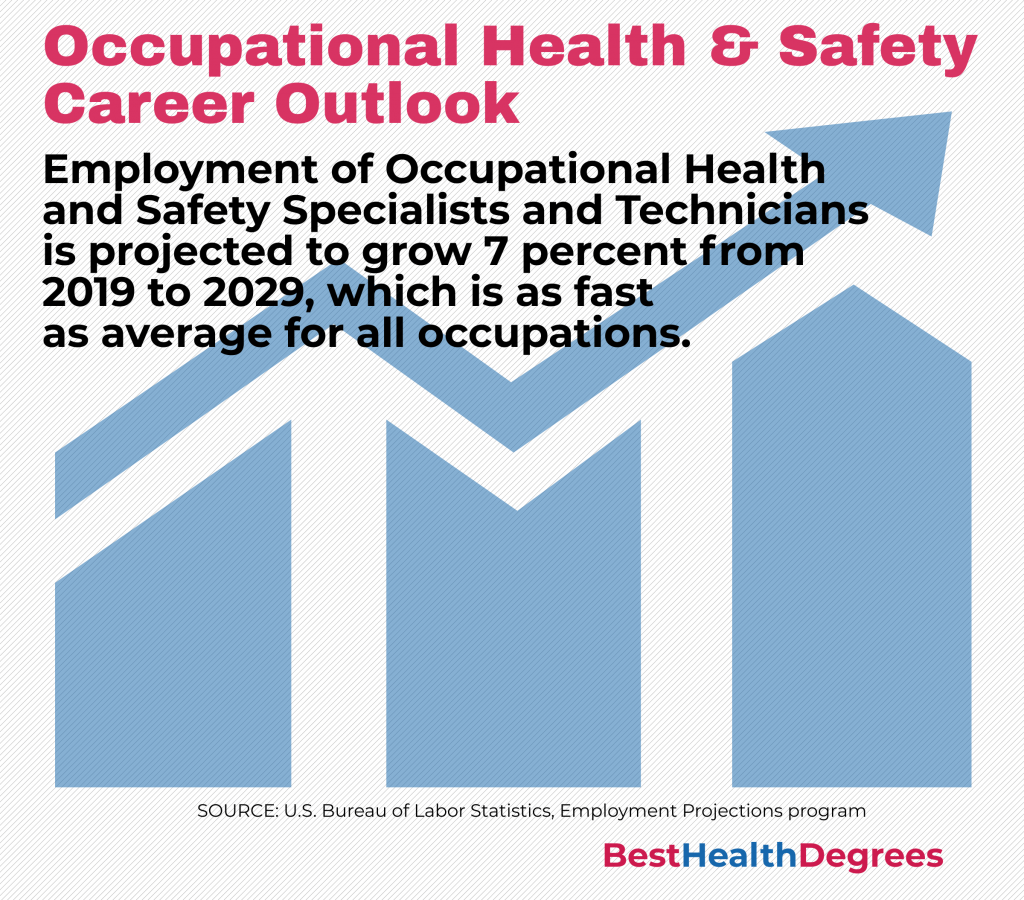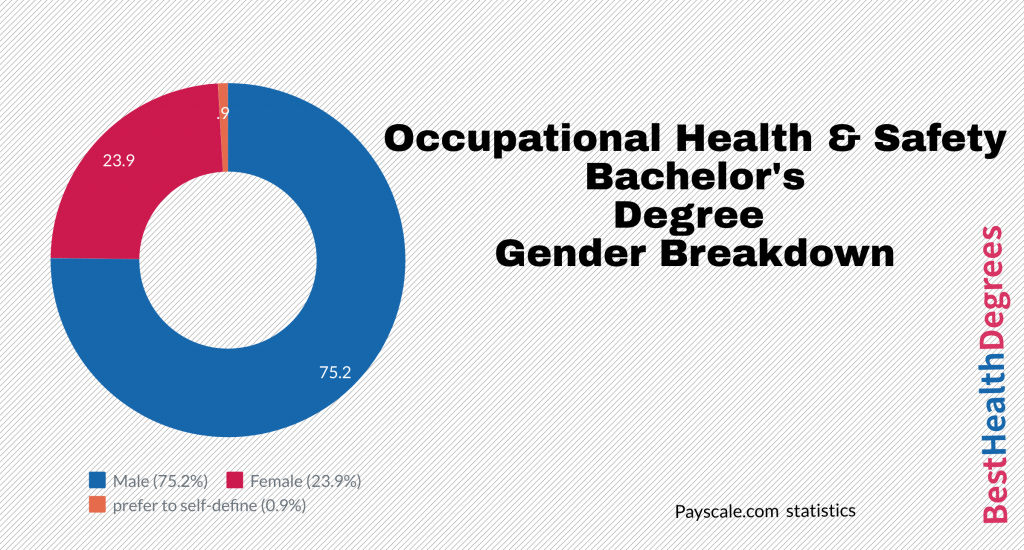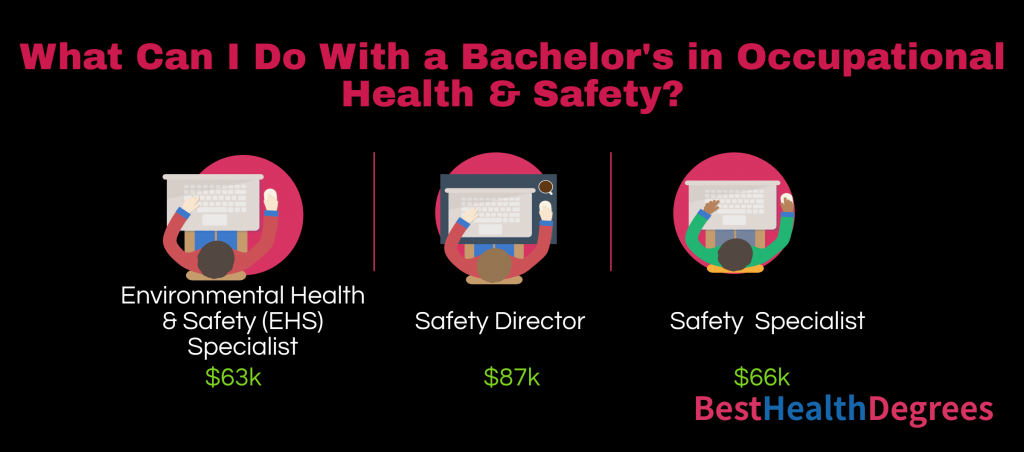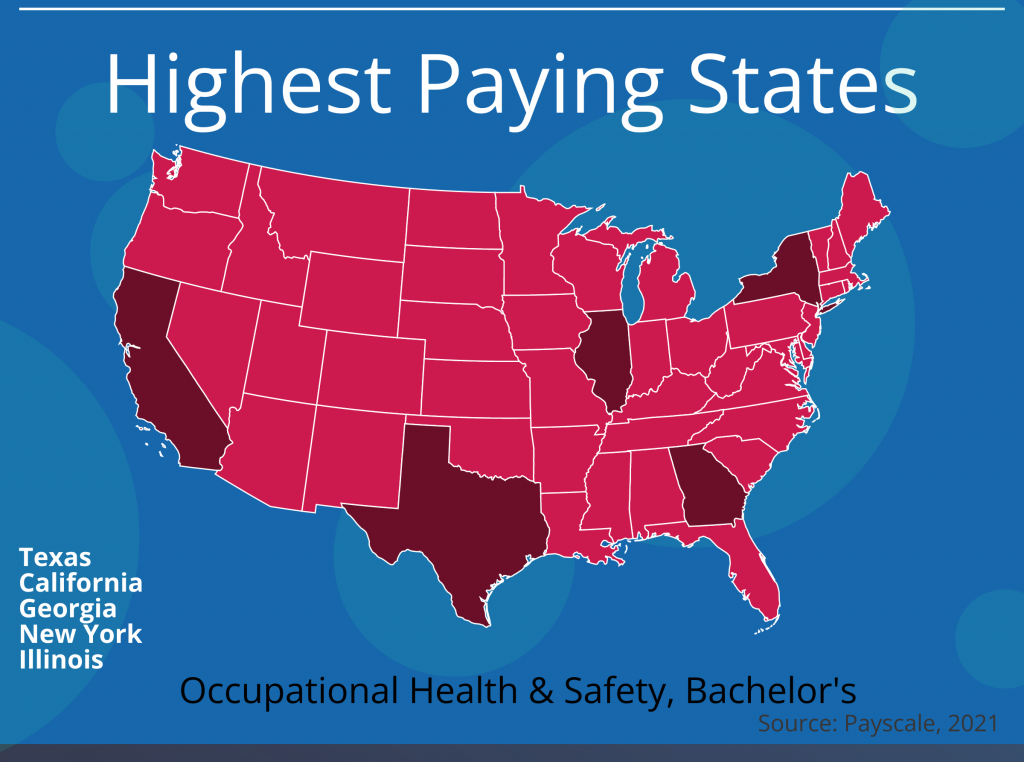Key Takeaways:
- Graduates can work in various sectors including manufacturing, healthcare, government, and private consultancy, focusing on ensuring workplace safety and compliance with health standards.
- Positions range from safety technicians and inspectors to environmental protection specialists and health safety engineers, emphasizing the prevention and management of workplace hazards.
- Professional certifications such as Certified Safety Professional (CSP) or Occupational Hygienist may enhance job prospects and credibility in the field.
You may find yourself wondering What Type Of Safety and Occupational Health Jobs Are Available? Follow along to learn more about your options in the health and safety field. Have you ever considered the individuals working in the field where they figure out what’s going on in the workplace and come up with solutions to help prevent illnesses and injuries? Occupational health and safety help develop safety precautions for all industries, which include factoring in those roles that can cause physical and mental illnesses in the present or over time.
Occupational health and safety are broad categories. Ergonomics, toxicology, violence prevention, and epidemiology fall under this umbrella, which overlaps with public health. Anything dealing with workers’ compensation, safety, and health standards are all part of this area. The protection of employees throughout the workplace is the main goal of this career path. This also helps regulate the standards of companies and how they handle their workers.
Many employers have departments within their human resources team to ensure workers are working under high compliance standards. If these standards are not met, the company will face huge fines. This is an entire team that helps companies regulate the way things are done to make sure workers are not put in harm’s way at any time. Individuals who work with the risk assessment team are certified and have to make sure all records are kept and training is being conducted on a continuous basis to keep the company from incurring damage or workers being put in harm’s way. If you are interested in a role that helps regulate the health and safety of workers in the workplace, you may want to consider becoming someone in this field.
Accreditation for Occupational Health and Safety Programs
Colleges and universities place a high emphasis on being recognized as a place for higher learning. Many colleges and universities have regional accreditation, being recognized from regional governing agencies for the quality of their programs. There are also specialized accreditations, such as accreditation by the ATMAE (Association of Technology, Management, and Applied Engineering).
ABET accreditation makes sure the college or university you’re considering has and maintains quality standards of that profession. This is a rigorous process that aids in delivering quality to your students. Voluntary in the U.S., having this occupational health and safety accreditation means that the institution took the time to make sure they could stand out from the others. Having this accreditation means:
- The institution is internationally recognized
- The institution follows best practices
- Instruction is based on learning outcomes
- Faculty and staff are involved in quality improvement and self-assessment
- Transfer credits may be accepted at more institutions
Occupational health accreditation is one of the first things to consider when searching for a program. There are also accredited online colleges for occupational health and safety that have proven themselves to be high quality with outstanding standards of education. An accredited online occupational health and safety degree holds the same weight as an in-person degree. The only difference is that the program is completely online with no requirements for students to visit the campus. This makes it easier for students who wish to attend certain colleges and universities but live out of state to complete their degree via this program.
Types of Occupational Health and Safety Degrees
A bachelor’s occupational health and safety degree is the same as an occupational safety and health degree. While there are different levels of degrees in occupational safety and health, the bachelor’s degree is what sets this career in motion. This also includes the online bachelor’s degree in occupational safety and health. The bachelor’s degree in occupational health and safety online programs are just as thorough and rigorous as the in-person programs. Individuals who go through this program will be able to work within organizations to help them train and inform workers about preventing workplace risks and hazards based on data and ideas.
Some of the courses required for the degree in occupational safety and health include:
- Introduction to Occupational Safety and Health
- Introduction to Fire Science
- Acoustics, Vibrations, & Noise Control
- Drugs in Society
- Systems Approach to Hazard Control
- Safety Training and Instructional Techniques
- Safety Program Management
- Industrial Hygiene
- Fundamentals of Safety Engineering and Human Factors
- Legal Liability in Health and Safety Legislation
- Hazardous Materials and Waste Management
These are all courses required as part of the fundamentals, but students must begin with core coursework that includes English, Speech, History, Political Science, Social Science, Science and Mathematics courses, and Humanities. Those who are already working the field may chose to study part time rather than full time.
There are also occupational safety and health electives students must choose go to toward their specific area of concentration.
Certifications and Licensure for Occupational Health and Safety
There are quite a few occupational safety and health certificate programs for students to choose from. According to the Occupational Safety and Health Administration (OSHA) which belongs to the United States Department of Labor, occupational health and safety certificate programs range from area to specialization. These certifications can assist when searching for occupational health and safety certificate jobs. Here are some of the occupational health and safety certificate program areas:
- Certified Occupational Health and Occupational Safety Specialist
- Certified Safety & Health Official
- Safety, Health & Environmental Professional
- Healthcare Safety Technician
- Safety Foundations
- Safety Associate Certificate
- Construction Safety and Health Specialist
- Healthcare Safety and Health Specialist
- Industrial Hygiene Specialist.
These are just a few of the occupational health and safety certifications you can attain. Occupational safety and health certifications have a wide range of opportunity. While you may start in one area, with this bachelor’s degree, it is easy to move into another more challenging role that may eventually propel the student to move further in their education. When researching the types of jobs that come with having a certificate like this, it’s important to consider the occupational health and safety certificate salary. As more people get into this field, knowing how to position yourself with the right certifications makes a difference. Although you get started at an entry-level in most cases, there are many roles within this specialization that command top salaries.
When considering safety certifications, it’s important to decide what is right for you. With so many different certifications available, figuring out the reasons why you’re going after specific ones is key. What are your career goals? Will you need the certification for where you are trying to go? Are you looking for better roles? Do you have time to devote to getting the certification? Are there specific requirements your current employer is requiring now, or requiring for you to move up in rank? These are all factors that have an impact on your options. The last thing you want to do is limit yourself.
These are some of the highest paying safety certifications:
- Associate Safety Professional (ASP)
In order to get this certification, you must have an associate’s or bachelor’s degree, along with at least a year of experience. This experience must include a 50% focus on workplace safety. - Graduate Safety Practitioner (GSP)
This certification cannot be attained unless you have CSP experience. Once you receive this certification, you must get the CSP within a six-year period. You can get this through BCSP. - Certified Safety Professional (CSP)
This is available through the BCSP. A bachelor’s degree and four years of safety experience is needed.
There are many careers with a Bachelor’s in Occupational Therapy degree. Occupational health and safety degree jobs that have great salaries include occupational health and safety technicians, environmental health and occupational health specialist safety jobs, occupational health and safety specialists, industrial hygienist, and health and safety engineers. Finding jobs with occupational health and safety degree requirements can be found on job boards, with career specialists, headhunters, and more. Occupational safety and health degree jobs are well paid and can help set someone up for future advancement in their career to achieve more lucrative positions.
The occupational health and safety specialist job description can provide insight into what you will have to do when working in this role. This should answer all questions about what does an occupational health and safety specialist do? This occupational safety and health job description also works for the occupational health and safety job description, as they are one and the same.
This role collects data on many different types of work environments and analyzes them and the work procedures. These people inspect the workplace to ensure regulatory measures are adhered to in terms of safety, health, and the environment. The duties include preparing written reports on findings; demonstrating the use of safety equipment; evaluating of programs on workplace health and safety; reviewing job sites; investigations of incidents and accidents to see how they were caused and how they can be prevented; and the design and implementing of policies and procedures to help protect workers from work conditions that can harm them. For instance, the Coca Cola company would hire occupational health safety specialists to keep their factories safe and clean.
These individuals work in government, manufacturing, construction, management, and hospitals. They also have the CSP, ASP, OHST, CHST, and CIH certifications. On-the-job training is usually provided to make sure they fully understand the role and the expectations. They should be able to:
- Use technology
- Communicate well
- Be detail-oriented
- Have physical stamina
- Have problem-solving skills
- environmental health and occupational health specialist safety jobs
What Does an Occupational Health and Safety Officer Do?
Some of the occupational safety office job descriptions includes advising managers and workers as they help reduce risks from safety, health, and environmental causes and conditions. They help set safety standards within the workplace and identify and handle risk assessments at the highest level. The occupational safety job description includes developing systems for health and safety, along with policies, manuals, training, and exercises to keep workers safe.
Individuals in this role also keep records of all safety-related incidents and events. They investigate and report accidents and follow up on any post-injury procedures. They hold all records of certifications needed to keep things going. The occupational health and safety office also knows environmental safety standards, occupational health and safety specialist and local and federal safety standards, occupational and emergency procedures for safety, construction safety standards, and all the labor and environmental laws intimately.
An occupational health and safety advisor is someone who works for commercial entities and governmental agencies. As part of the occupational health and safety advisor job description, these individuals make sure the company is following all regulations on health and safety, conduct trainings in-house for managers and employees, offer advice after conducting risk assessments, develop safety protocols, and help minimize any occupational risk within the workplace.
The occupational health and safety coordinator job description falls under the advisor. The coordinator is responsible for working with the advisor or manager to coordinate all activities to ensure adequate health and safety measures are being taken to protect the workforce.



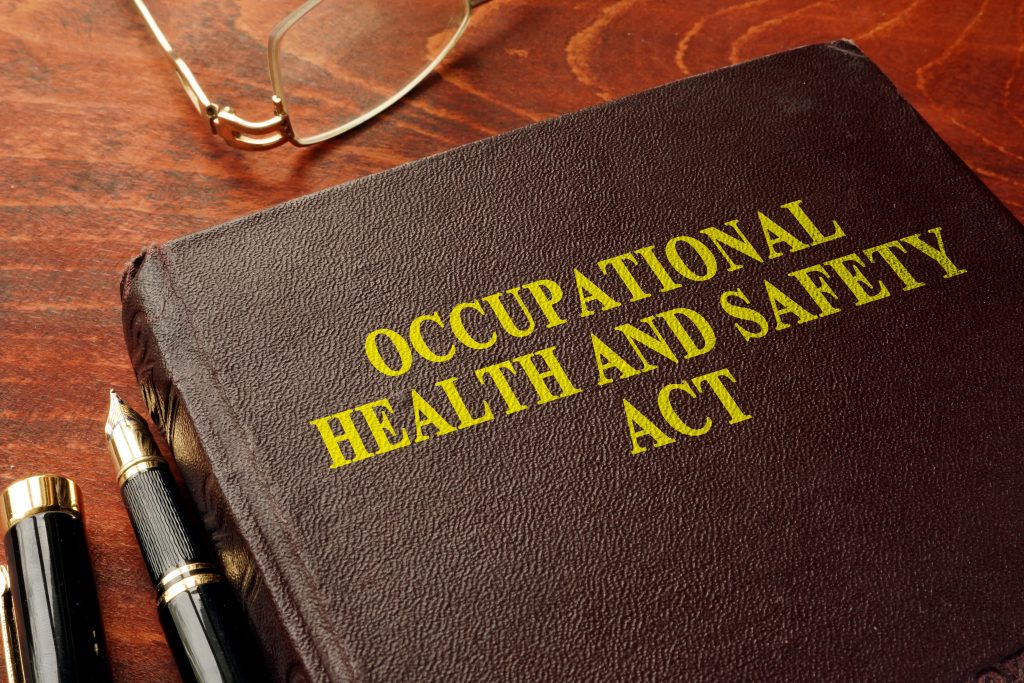

What is the Main Purpose of the Occupational Safety and Health Administration (occupational health specialist)?
This agency was created to make sure workers have safe and healthy working conditions through the regulation and setting of standards, providing training, education, outreach, and assistance. Since this is a regulatory agency, people may wonder how to get a job at OSHA in Washington DC. Individuals interested in how to get a career with OSHA must seek occupational health and safety specialist career opportunities and other OSHA inspection jobs or OSHA inspector jobs on their job boards. Some of these positions are also listed as occupational health technician opportunities with safety consulting firms, hospitals, or construction companies. Job seekers should look for the job type and date posted. Was it just today or many days ago? 2 days ago? Health and safety jobs are in demand and competitive!
Most people who work with occupational health and safety specialist have at least a high school diploma, but most opportunities at OSHA require a bachelor’s degree at the minimum to fulfill the obligations of their role.
occupational health and safety specialist inspectors have three career tracks to follow:
- Industrial hygienists
- Safety engineers
- Safety and occupational health specialists
- environmental health and occupational health specialist safety jobs
- health specialist
- safety manager
The first step is making sure you have the educational requirements and certifications if necessary for health specialist and safety jobs. You also want to intern and get as much experience as possible with health specialist and safety jobs. While the bachelor’s degree does not necessarily have to be in occupational health and safety, it must be a relevant concentration such as engineering, biology, or chemistry.
Knowing all the federal health and safety laws is also important to know when attempting to get a job working with occupational health and safety specialist such as protecting workers, health standards.
Occupational Health and Safety Salary
The salary ranges for these type positions vary based on location, expertise, education, and experience. The typical health and safety and health degree salary usually falls within the $31,000 to $83,000 per year category. This is just a range and can fluctuate based on different criteria – especially the type of agency where the role is being fulfilled. The occupational health and safety degree salary can change when there are more requirements. For instance, the occupational health and safety specialist’s salary ranges from $52,000 to $95,000 per year.
If the individual has additional experience or certifications, their salary can jump exponentially. The occupational safety degree salary ranges are just a start to provide insight on what can be achieved once you have the degree and start pursuing a career in this industry.
Professional Organizations in Occupational Health and Safety
It is always a good idea to find professional organizations in any industry while still in the program. Students who join at this level get huge discounts for being students while reaping the benefits of being part of the overall organization. Additionally, students are able to find mentors and have access to additional information other students who have decided not to join don’t. Students in professional organizations have opportunities to compete and gain visibility for themselves at a high level, positioning themselves for success. It is not unheard of for students who have been in professional organizations to get internships and other opportunities before they are released to the general public.
Most people don’t realize the value of being in a professional organization until they start working in their current field. It’s easy to consider a professional organization as something that will take up time you really don’t have, but there are tons of benefits and value to gain from being part of a larger entity that focuses on your industry.
A professional organization or association helps unify people with the same interests, monitors quality standards within the profession, promotes research and education, and helps professionals hone their skills. Some of the greatest benefits include:
- Occupational Health Resources
Professional organizations have exclusive resources that only members can access. This could be articles, message boards, environmental health and occupational health specialist safety jobs, job boards, and trainings. If you’re looking to double down on your expertise, there are people you can connect with to help you along the way. - Occupational Health Networking
There’s some truth to the saying, “It’s not what you know, it’s who you know.” Professional associations and organization look to their internal networks FIRST when new roles are opening. By being active and engaged, you’ll grow your contacts and have opportunities others can’t pay for. Finding people with a common interest isn’t that common when it’s dealing with work. This is a great way to find out about things you may have had questions about and finding out more about roles you may be interested in. - Occupational Health Professional Development
Professional development is one of the most important aspects of joining a professional organization. While you may obtain a certification in an area of expertise, you have to keep that certification up to date. Professional organizations offer courses that can be applied to the certification to ensure it does not expire. The great thing about these courses is that as a member, they are free, or the cost is much less than it would be without the assistance of the organization. Additionally, organizations of this nature have open forums to help work on skills and learn more about the profession. - Occupational Health Education
Organizations of this nature have conferences, seminars, and workshops on an ongoing basis for networking, to learn new skills, or through online courses. This is a great way to add additional certifications to your expertise. These educational components are designed to help in current roles or as a business owner. - Occupational Health Publications
Most organizations have their own publications. As a member you get them free or at a discounted rate. Members also have an opportunity to be featured based on their accomplishments. - Occupational Health Career building
These types of organizations also specialize in career building. From helping develop a strong resume to assisting with the job hunt, many people in organizations like this get a helping hand when they are trying to advance in their career. If you have your own firm, this is a good way to help get your name out there to the masses. The organization can help increase your visibility. - Occupational Health Support
The support one can gain from being affiliated in a professional organization is huge. There aren’t many places where coaching can be free, or someone can gain a mentor without having to pay. Informal or formal, these are opportunities that don’t come easy. A professional organization can help get your foot in the door. - Occupational Health Insurance
A lot of professional organizations have their own discounts on services and especially health insurance. These are specific plans designed for members and their families. While other types of insurance may be available, this is an easy way to obtain insurance, especially if working as an independent contractor or someone working on their own.
Some of the top Occupational Health and Safety Associations are:
American Industrial Hygiene Association (AIHA)
National Safety Council (NSC)
World Safety Organization (WSO)
Environmental Associations for occupational health specialist
Air & Waste Management Association (AWMA)
American Academy of Environmental Engineers (AAEES)
National Association for EHS&S Management (NAEM)
National Association of Environmental Professionals (NAEP)
National Environmental Health Association (NEHA)
There are a few other professional organizations associated with the occupational health and safety industry that can directly benefit individuals who are looking for a way to expand their careers or start down a different path. These professional organizations can help point you in the right direction, especially if you started in one concentration and find that it may not be the best fit for you. Working with their career specialists can help add clarity and additional knowledge on how things are in the field before investing any additional time and money into the career path.
Students who wish to pursue a career under this bachelor’s of occupational health and safety will find themselves on a career path that has many opportunities and can be very lucrative once they find their specific niche. Speaking to a counselor prior to enrolling in the program to get a better understanding of what is expected is key.
Related Rankings:
